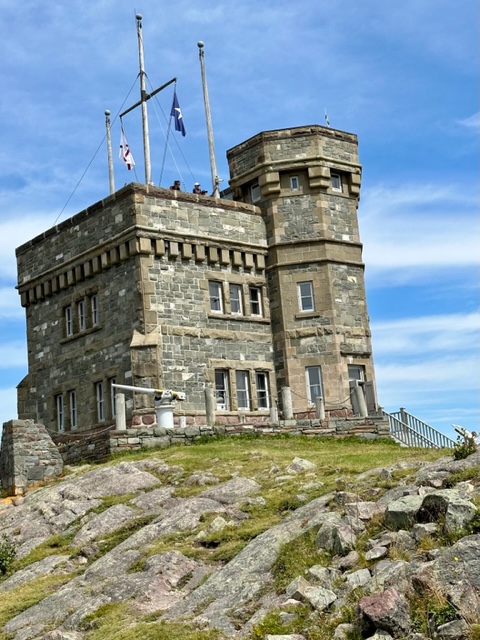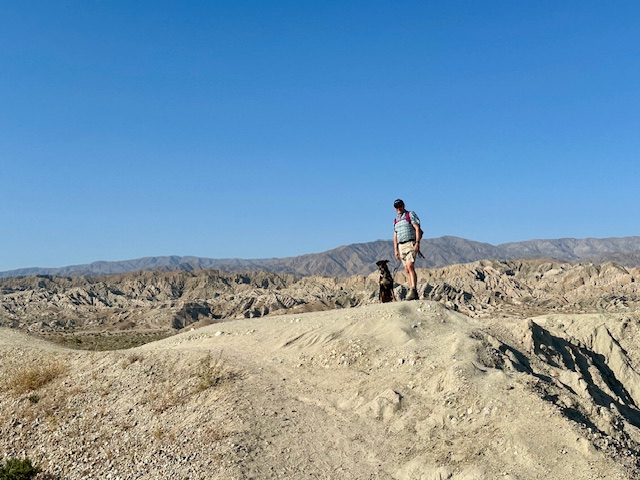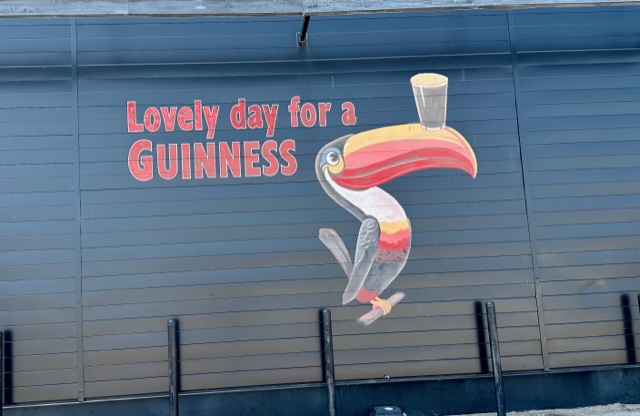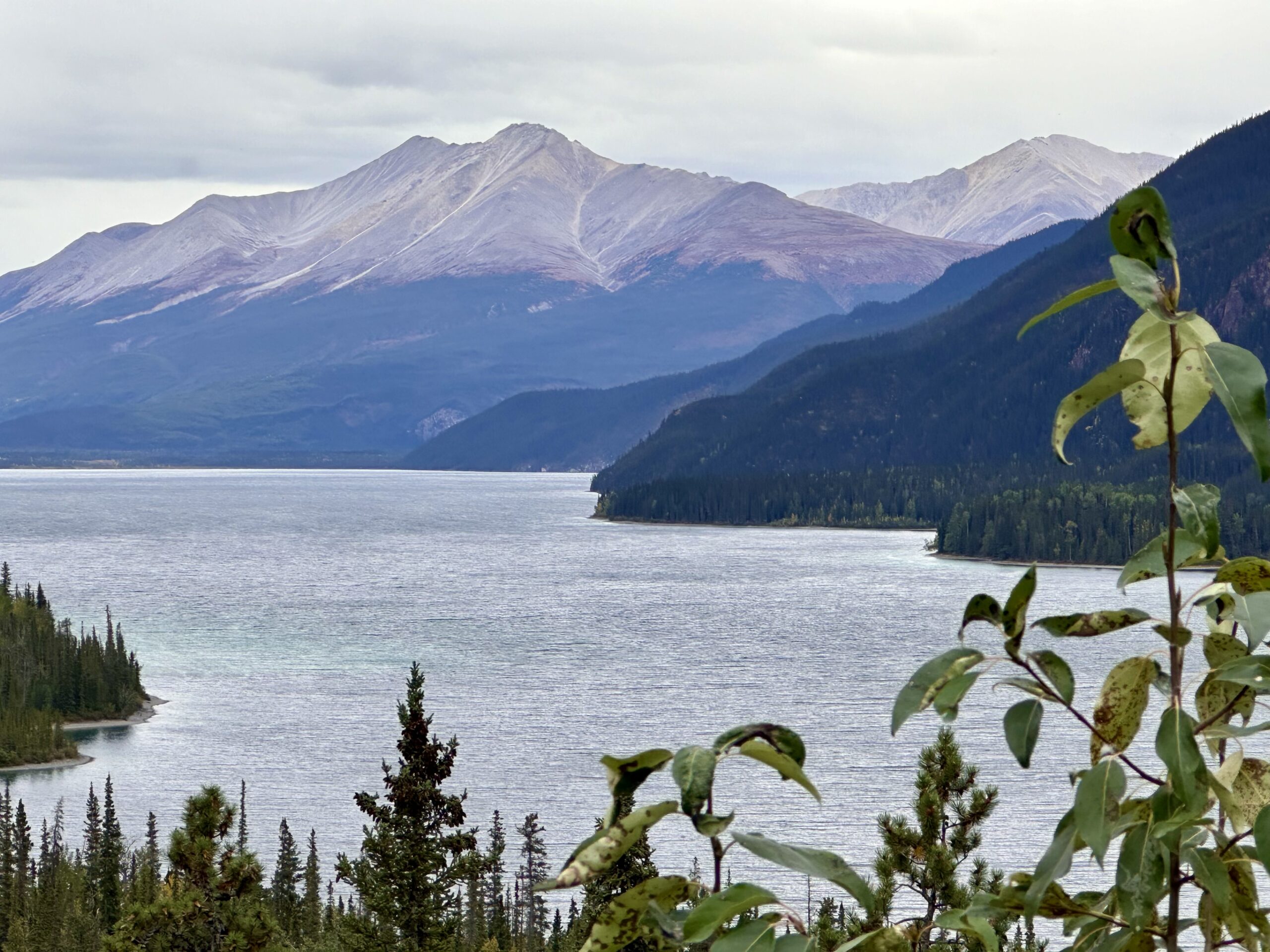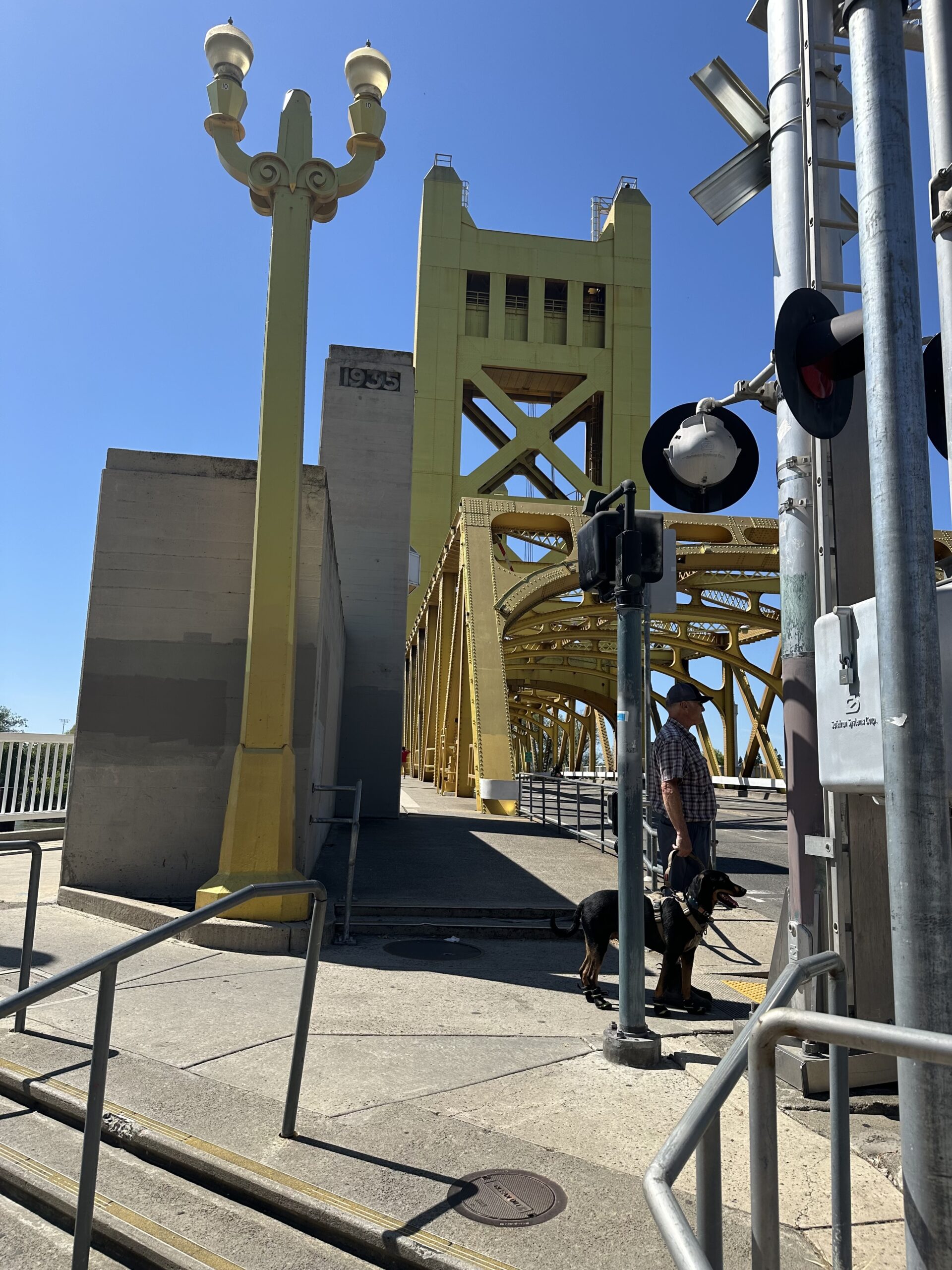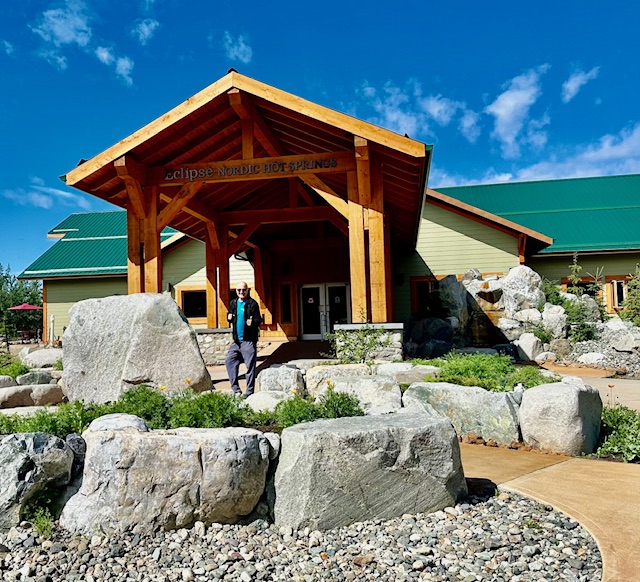Bellevue Beach to St John’s, Newfoundland – 15 August 2023
We were very excited to get to St Johns. I had read so much about it and was looking forward to being in a big city again and having lots of different places to explore. We also needed to stock up with dog food – a brand that only Pet Smart carry, as well as get an oil change on the car and buy items we haven’t been able to get hold of for the past couple of months. We ended up extended our stay in St. Johns as my new computer developed a lovely black line down the right side of the screen and we needed to get it fixed in an Apple store. As it turned out, it was great that we did extend as there was so much to do in the area.
Our campground, Pippy Park was huge. It had a number of linked trails and is one of Canada’s largest urban parks. It is a 3,400 acre land reserve, and a nature conservation and recreation area. During our time in St Johns we took advantage of the trails and had many lovely walks with Jax.
On one such walk we saw the Confederation building which serves as the home of the Newfoundland and Labrador House of Assembly. It is located on Confederation Hill overlooking St. John’s. The brick and concrete clad building has 11 stories and is 210 ft tall. It was completed in 1960 at a cost of $9 million to replace the Colonial Building. A lantern is located at the top of the copper roof of the central tower and acts as a beacon when turned on at night. There were several statues on the ground including John Cabot which stands at the entrance of the building. John was an Italian Navigator and Explorer who landed in NL on behalf on King Henry VII in 1497. Also directly in front of the Confederation building was a large shield of Newfoundland and Labrador. The Ocean Ranger monument overlooks the narrows, and is a reminder of the open Atlantic Ocean and its exposure to the elements. Ocean Ranger was the world’s largest semi submersible drilling rig. The rig capsized on February 15, 1982, killing all 84 crew members. This area is a place for loved ones to come and pay their respects. Finally an 8ft tall statue of Dr. Wilfred Grenfell who came to NL in 1892 as a British medical missionary. He spent much of his life providing health care services in Labrador and northern Newfoundland.
On Wednesday we went to the Avalon mall to pick up a few things and had a bite to eat in the food court. After a Latte at Starbucks we drove back to the RV to collect Jax and then drove to downtown St. John’s where we parked near the harbour. From there we walked up through Jelly Bean row with all the brightly coloured houses that St. John’s is so well known for. The roads were closed off from cars so we were able to wander freely, checking out the interesting shops and restaurants. None of the restaurants with patios were dog friendly but we did find a pub (Trinity) that didn’t serve food and were able to enjoy a pint outside. St. George’s street is full of bars and pubs, several of them offering live Irish music. There are more pubs per square foot on this street than anywhere else in Canada. I found a Moose called “Shammoose” outside the Shamrock pub. Unfortunately he was stuffed but at least I finally got to see one and could give him a hug. We had a bit of a Newfoundland downpour along the way (our raincoats come with us everywhere now) but as usual it was over very quickly.
On Friday, Derek was up bright and early to take the car for an oil change and check up. That afternoon, we drove to the entrance to North Head trail which is right outside the visitor’s centre for Signal hill – a designated historic site. Signal hill is situated above the only entrance into the St. John’s harbour and was a strategic area of fortification during early wars between the French and English. It was named Signal Hill because Flag communication between land and sea that took place there from the 17th century until 1960.
A 9 Gun Battery was added in 1797 and at the same time a wooden guard house and gun power laboratory. In the 1830’s the Queen’s Battery became the most important defense work in St. John’s. The guard house was expanded and replaced with a stone building that could accommodate an Officer and 19 men. As well, the arnament continued to be upgraded over time. After the US Civil War a lot of the defences at Signal Hill became obsolete. Finally, the withdrawal of the British Garrison from St. John’s in 1870 marked the end of the Queen’s Battery.
The Cabot Tower at the top of the hill was built in 1897 to commemorate both the Diamond Jubilee of Queen Victoria and John Cabot’s 1497 voyage to North America. The tower was used for flag mast signalling, and it also had a Marconi wireless station on the second floor, which has since been moved to St. John’s International Airport. In 1901, Signal Hill was at the centre of a major international breakthrough. Guglielmo Marconi, using an antenna suspended 500 feet by kite, received the first transatlantic wireless signal, the letter ‘S’ in Morse code. Marconi’s breakthrough, which was part of an ongoing rivalry with many inventors, led to a new age in communication technology.
That evening we went to an outdoor concert featuring Meg Myers, Metric and Alanis Morisette which was part of the Churchill Park Music Festival. Alanis’s voice is just incredible. I love the way she tilts her head back and lets out these amazing sounds in between the harmonica and guitar. She has an emotive Mezzo Soprano voice which is hard to describe but certainly very distinctive and beautiful. Loved watching (and listening) to her perform. We were able to bring chairs so didn’t have to stand the whole night.
On Sunday we walked around Quidi Vidi lake, only to find an interesting tradition in St. John’s. Each year in early August, St. John’s shuts down for the day for the Royal St. John’s Regatta. Founded in 1818, it is one of the most historic Regattas in North America, predating the Oxford-Cambridge boat race (1829). Its “Royal” designation was granted by Her Majesty Queen Elizabeth II who visited this event in 1978.
On Regatta Day, tens of thousands of Newfoundlanders converge at Quidi Vidi Lake to watch male and female rowing crews, compete in heats throughout the day, culminating in championship races held in the early evening. They do things a little differently here – competitors row in wide hull wooden boats with fixed seat rowing instead of sliding seat, rather than using eight sweep oars, they use only six. Also instead of rowing straight down the course to the finish line, athletes row to the halfway point, then turn, and row back to the start line.
In August of 2005, a cast bronze sculpture called “The Rower” was installed near the regatta starting line, a monument to dreams and to human potential. It depicts a rower in mid stroke, his oar sweeping out a large arc of water. Incredibly, unlike other Regattas all rowers participate and enjoy rowing free of charge. They row for a sponsoring company or community.
That evening we went to O’Reillys one of the most popular Irish Newfoundland pubs in St. John’s. We arrived just in time to see couple having wedding photos outside the pub. We enjoyed our beers and cider with an assortment of tasty appies including Cod tongues which are actually a muscle in the Cod’s neck. While tasty, I found it a little chewy for my liking. Some really great foot stomping music first by Noel Worthman and then The Reels. As we left we got caught in another downpour – but I was prepared!
Before leaving St. John’s we visited “The Rooms” a museum and cultural facility celebrating the history, heritage and culture of Newfoundland and Labrador. (NL) It was a great way to expand on what we have learned about this province the last couple of months. The Rooms has millions of natural history specimens and artifacts, connecting past, present and future. The building is a unique design which mirrors the fishing rooms where families came together to process their catch. It was very interesting to read the illustrated stories of the diverse populations of people who founded, lived and made NL their home. From the Indigenous inhabitants to the Vikings and the English and Irish. We were particularly interested as to why there is such a strong Irish influence here. Irish migrations (from south east Ireland) to NL date back to the 17th century but peaked during the 19th century when between 30,000 and 35,000 immigrants arrived on the island. Most were seasonal, working in cod fishery. As the industry shifted to a resident operation during the late-18th and early-19th centuries, the majority of Irish migrants settled permanently in NL.
During the 1990s, the province was severely impacted by the sudden collapse of the Atlantic cod fishing industry. The 2000s brought a renewed interest in the oil sector, which helped to revitalize the economy of the province. During WW2 many Newfoundlanders and Labradorians enlisted in British and Canadian forces. Others supported the war effort by serving as merchant mariners in the British and Allied shipping that proved vital to the war effort in Europe.
Some significant moments in history were when radio operators in the Marconi station received a distress signal from the Titanic, Gander’s role during 911 and Marconi’s receiving the first transatlantic wireless signal.
Poverty and emigration have remained significant themes in NL history, despite efforts to modernize since entering the Confederation. Over the second half of the 20th century, the historic cultural and political tensions between British Protestants and Irish Catholics faded, and a new spirit of a unified Newfoundland identity has recently emerged through songs and popular culture.
One of the most interesting displays we saw was a 29ft giant squid. It was caught by fishermen in Hare Bay 40 years ago, but the first giant squid ever scientifically documented and photographed was discovered in Newfoundland in 1873. Giant squid live in the ocean at depths between 1000-2000 ft and are therefore rarely seen. However between 1870 and 1881, a number of them were seen in Newfoundland waters and washed onto beaches. It is thought that the ‘Kraken” reported by many sailors at that time, was probably the giant squid.
Newfoundland is not only home to the first verifiable giant squid, it is home to the largest. A live giant squid reportedly 55 ft long, was discovered by fisherman in Thimble Tickle (love the name!) NF on 2 November 1878. The animal was described as ‘churning the water into foam’. It was subsequently recognized by the Guinness Book of Records as the biggest squid in the world. More than 60 giant squid have been found in NF which is one fifth of the planet’s specimens.
One of the things I had been looking forward to most of all was a Whale and Puffin boat tour. Our first reservation got cancelled due to bad weather but thank goodness the next reservation went ahead.
The Atlantic Puffin (nicknamed Sea Parrot) is the official bird of NL. Standing at only 7 inches high (I thought they would be as large as Penguins) it has bright Orange feet and during the breeding season Orange, Yellow and Blueish plates on its bill. These turn to grey in the winter. The Puffin is a poor flier having to flap its wings about 300-400 times a minute to stay airborne. It can hold its breath for up to one minute underwater and can carry an average of 10 fish in its beak, but one time, a puffin was spotted carrying a record breaking 62 fish!
They fly east to spend their winters on the North Atlantic sea returning in the spring and summer to the coastal areas and islands for breeding. They dig burrows for nests and usually return to the same spot with the same mate year after year. They live approx. 30-40 years.
The Witless Bay Reserve where we motored to, boasts the largest colony in North America with 260,000 pairs. There are over 350 species of birds and over 35 million seabirds here.. There is a ongoing conservation effort to take care of the Puffins called Puffin Patrol where volunteers can help in rescuing stranded puffins and relocating them to safe grounds. There are lots of You Tube videos about Puffin Patrol and David Suzuki filmed a documentary worth watching.
I was really hoping to see Whales but we didn’t see any. Apparently a little late in the season, but at least we were able to see the birds.
On our last day in St. John’s so we decided to visit the national historic site – the Cape Spear lighthouse which is situated at the most easterly point of Canada. This lighthouse, built in 1836, is the oldest surviving lighthouse in the province. It is a square, two story building with the tower and light in the middle. The light and technology in the lighthouse changed over time until 1955, when a new concrete lighthouse was built near the old one and became operational. We were acutely aware of the extreme importance of these lighthouses to Mariners as the weather was extremely foggy and you could hardly see in front of you. Every so often a loud fog horn would sound from the automated lighthouse and you would see the light flash. Both the light and the horn are checked by the Canadian Coastguard one a month.
It was interesting to wander through the rooms in the restored lighthouse and imagine what it must have been like to live there. The rooms were a good size and it did look pretty cozy. Generations of the Cantwells’ family stayed in this lighthouse and maintained the light for over 150 years.
Down near the water were the remnants of the World War II coastal defence battery – Fort Cape Spear. Here Canadian and American soldiers lived as they guarded St. John’s from lurking German U-boats. Two of the guns were known as disappearing guns – after firing they would be lowered out of sight.
Unfortunately, the part that needed to be replaced on my computer did not arrive in time and I ended up taking it back. When I later switched it on I found that the screen was now completely black so I couldn’t use it at all. So Derek and I have to share a computer until we can get to Halifax and get it into another Apple store. What a pain!

